Different settings that make diamonds shine
When it comes to expressing personal style and taste, rings stand out as a captivating reflection of one's individuality. Each piece of jewelry possesses a distinct allure, shaped by exquisite craftsmanship and attention to detail. From the meticulous design process to the final setting, every stage contributes to the creation of a remarkable treasure. The setting, in particular, holds a pivotal role, demanding the utmost patience and skill from the jeweler. Its impact on the final product is immense, determining whether the ring will leave a lasting impression on its wearer. In the realm of ring selection, the setting is as crucial as the gemstone itself. It not only secures the precious stone firmly in place but also elevates its inherent beauty. Let's delve into the realm of ring settings and discover their unique characteristics and styles, tailored to cater to diverse preferences and tastes.
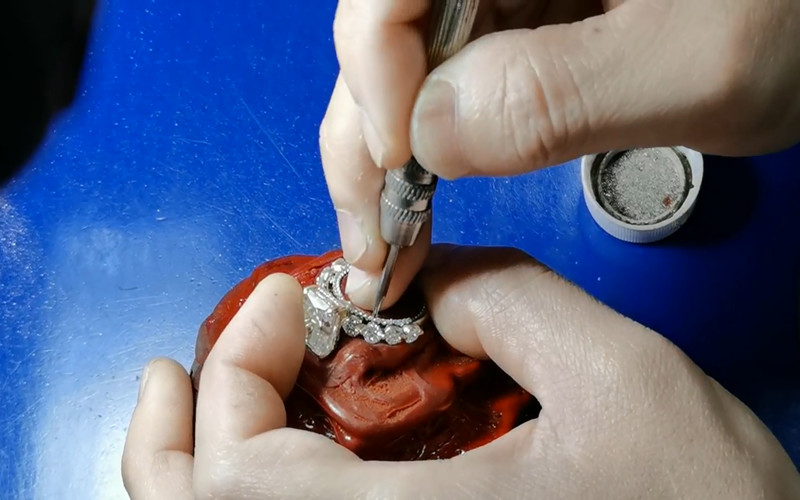
A diamond setting is a process in which a diamond is set into, or rimmed into, a gap on the outside of a piece of jewelry. There are many different settings, each with its advantages and disadvantages.
Using the popular fork setting as an example, the diamond is placed on a metal clip sold to the ring's band. The diamond is then held in place with a fork (also known as a claw or basket), which is bent to hold the diamond securely.
When customizing or purchasing jewelry, the diamond setting is one of the most critical factors. It not only determines the overall style of the ring but also visually affects the diamond's size and even the diamond's security.
Do you need clarification on the various types of diamond settings available? In this article, we'll introduce you to the more popular types of ring settings on the market, and we'll present you with a guide to choosing a ring setting, weighing the pros and cons of each setting type, and summarizing how the environment can affect the look and price of your ring jewelry.
10 common types of diamond settings:
Click to see more rings with different types of settings
1*Prong Setting: A Classic Beauty
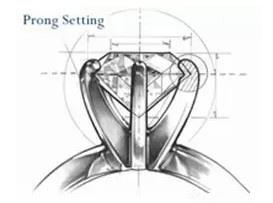
The prong setting reigns supreme as a classic and widely used option for diamond rings. This design features delicate metal claws, typically four or six, that grasp the diamond securely in place while allowing maximum light to enter and reflect off the facets. The prong setting enhances the diamond's brilliance and provides an elegant and timeless look. And there are countless design options (such as the number and shape of the claws, the height of the diamond setting, and the orientation of the diamond). It is commonly divided into a three-claw setting, a four-claw setting, and a six-claw setting. Its advantages and disadvantages are described below.
Advantages: The most significant advantage of this setting is that the metal covers the diamonds on the ring to a small extent, the claw setting is simple and delicate, the light reflection is strong, the diamond's cutting surface can be exposed to the maximum extent, to highlight the diamond's brilliance in all directions, no matter from which angle the diamond is viewed, it can sparkle and shine. With a claw-set ring, the diamond is more firmly set and easy to clean. Claw settings are best used with diamonds of good cut and high clarity grade.
Disadvantages: Claw settings expose the diamond to the maximum extent, so it is easy to be bumped during wear, and it is also easy to hook your clothes or hair, so you need to be more careful in daily wear.
2*Bezel Setting: Sleek and Modern
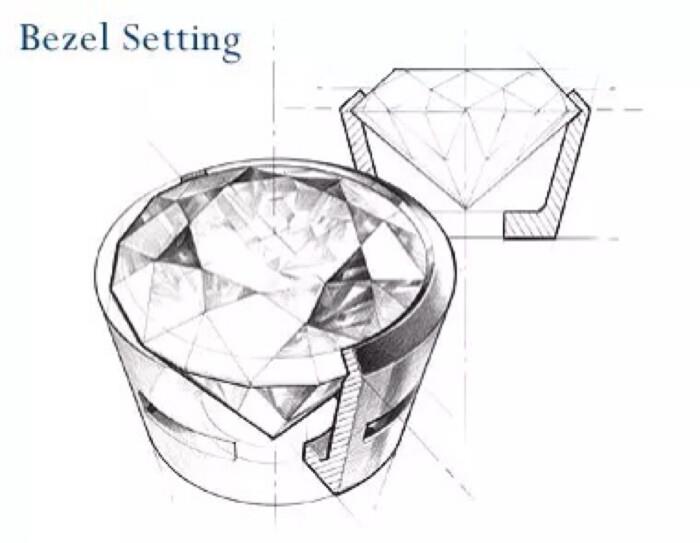
The bezel setting embraces a contemporary aesthetic with its clean lines and sleek design. In this setting, a metal rim surrounds the diamond, holding it securely. The bezel setting offers excellent protection for the diamond and adds a modern touch to any piece of jewelry. Rather than gripping the diamond with a claw, it is a skinny metal border that wraps the diamond tightly, using the metal edge to seal it below the girdle in a metal holder. The bezel setting can be either fully or partially wrapped, meaning that a portion of the diamond's edge is exposed.
Advantages: The overlay protects the diamond and makes it more vital to avoid falling off. The setting surface is flat and smooth, so it is challenging to hook to other things, which is a good choice for nurses, teachers, and other professionals.
Disadvantages: Although the wrap setting protects the diamond well, and most of the diamond is set into the inside of the ring, it will not allow the characteristics of the diamond to play out, and the fire of the diamond will be obscured, making the diamond appear smaller than it looks.
3*Invisible Setting
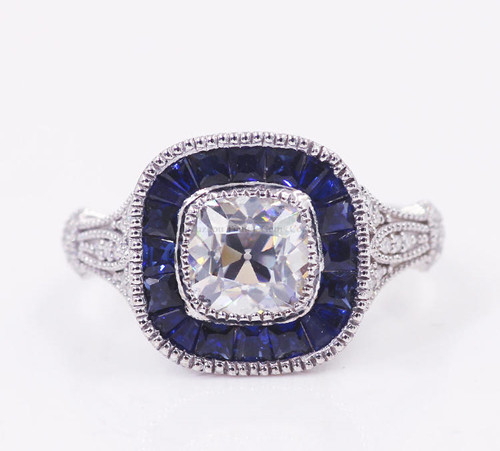
Invisible Setting is a technique used in jewelry design to create a seamless and continuous look by embedding gemstones without visible metal prongs or bezels. Here are some advantages and disadvantages of Invisible Setting:
Advantages:
Enhanced gemstone visibility: The Invisible Setting technique allows gemstones to be showcased prominently without visible metal parts obstructing the view. This maximizes the brilliance and beauty of the gemstones, creating a stunning and captivating visual effect.
Smooth and continuous appearance: With no visible metal separating the gemstones, the Invisible Setting creates a sleek and seamless look. The stones appear to blend together, giving the impression of a solid and uninterrupted surface of gemstones.
Protection and durability: The gemstones in an Invisible Setting are securely held in place by hidden grooves or channels. This provides added protection against accidental knocks or impacts, making the setting more durable compared to traditional prong or bezel settings.
Versatile design options: The Invisible Setting technique can be applied to various jewelry types, including rings, earrings, and pendants. It offers flexibility in design, allowing for intricate patterns, geometric arrangements, and unique shapes that can't be achieved with other setting methods.
Disadvantages:
Complexity and expertise required: The Invisible Setting technique is intricate and requires skilled craftsmanship. It involves precise cutting and fitting of gemstones, as well as meticulous workmanship to ensure a secure and flawless setting. This complexity can make the process time-consuming and costly.
Difficult repairs and modifications: In the event of a damaged or loose gemstone, repairing or modifying an Invisible Setting can be challenging. The intricate nature of the setting may require significant effort and expertise to restore or adjust without compromising the overall design.
Limited gemstone compatibility: The Invisible Setting technique is most commonly used with square or rectangular-shaped gemstones, such as princess or baguette cuts. It may not be suitable for other gemstone shapes or sizes, limiting the variety of stones that can be used in this setting style.
Cleaning and maintenance: The Invisible Setting can make cleaning more intricate compared to other setting styles. The hidden grooves or channels between the gemstones can accumulate dirt, oils, and debris, requiring careful and thorough cleaning to maintain the brilliance of the stones.
4*Tension Setting: Captivating Suspension
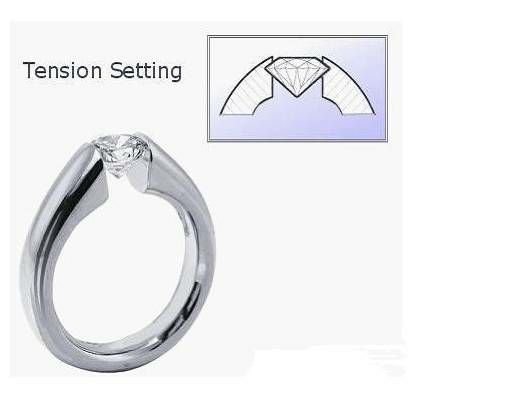
Also known as card setting, tension setting, etc., it refers to the use of metal tension to squeeze the diamond inward so that it is fixed in the diamond girdle, so that the diamond looks like hanging between the metal shank, its setting is more demanding on the diamond, the lower hardness of the stone may be squeezed deformation, so you need to use the carat, hardness and higher quality of the diamond. The card set is very distinctive and is sought after by many fashionistas.
Advantages: more exposed diamonds for added shine; No claws, no need for extra maintenance claws.
Disadvantages: the stones are easily scratched and deformed, misaligned by external forces, and easily lost; Difficult to adjust the size of the ring when the wearer's finger size changes.
5*Flush Setting: Sleek and Subtle
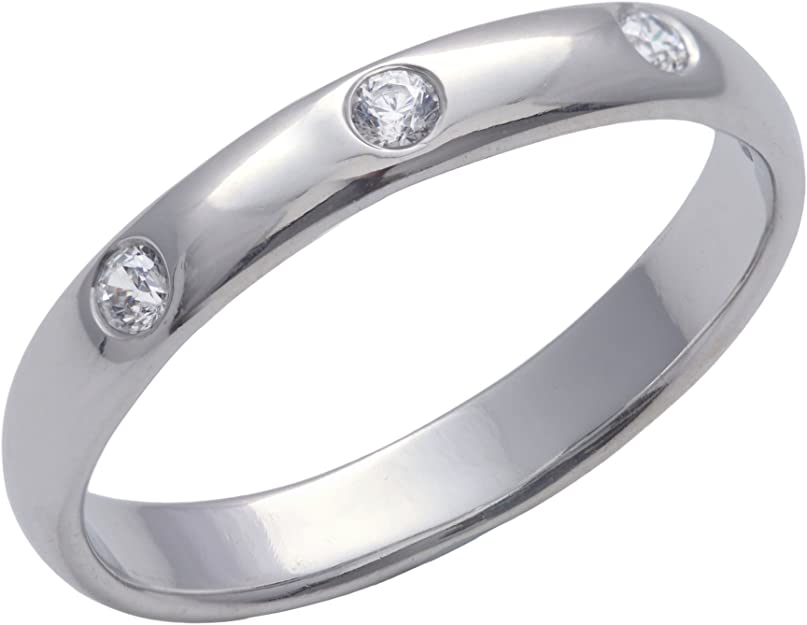
The hidden setting is also known as the gypsy or buried setting. This setting is very similar to the clad setting, and the difference is that the gemstone in the hidden setting will be flush with the metal surface as if the rock is sunk into the metal as if only the general jewel is tapped. This style is bland, simple, and elegant in appearance, suitable for everyday wear and favored by many men and women.
Advantages: It protects the diamond better and is more stable. Simple and generous appearance. It needs to be easier to hook on other things. I need to scratch.
Disadvantages: The diamond is wrapped below the waist, and only one face can be seen.
6*Channel Setting: Sparkling Elegance
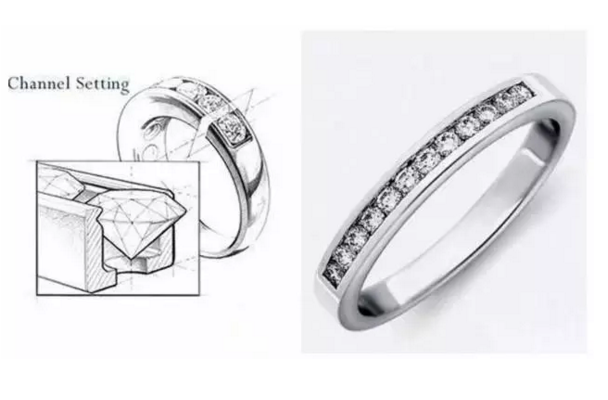
Also known as orbital setting, it is a unique channel cut to set the stone better. This setting allows the small diamonds to be better fixed, and the diamonds are set one next to the other neatly in the middle of the metal channel.
Advantages: it makes the surface of the jewelry smooth and neat, it protects the girdle of the stone well, and it gives the visual comfort of flowing water.
Disadvantages: slot-set rings are not convenient to change the size of the ring number later because once the scope is modified, it means that the metal slot also has to change, and the space occupied by the stones will also change, once there is curvature, the diamonds are extremely easy to fall off, so pay more attention to its size when buying.
7*Bar Setting
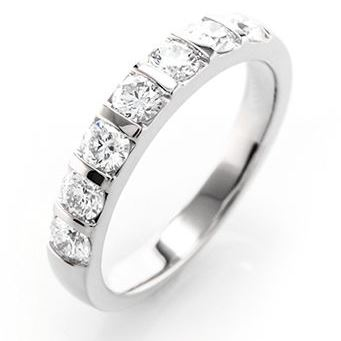
The stones are separated from each other by metal, which is recessed in the middle, and the metal rods on the left and right hold the stones tightly in place. The rod set will leave two edges to make the rocks better exposed, and although the stones are separated by metal, the top is visible and does not block the light of the rocks because it leaves enough space for the light to pass through the diamond.
Advantages: The outer surface of the ring is very flat and secure and does not quickly hook onto other things. It allows plenty of light to pass through the stone and shine brightly. The bezel is neat and straightforward, making it suitable for everyday wear.
Disadvantages: The gaps between the rings may be difficult to clean. Since the stones are held in place by the pressure between the metals, if the size of the ring needs to be modified, it may cause the rocks to fall out.
8*Pavé Setting: A Dazzling Display
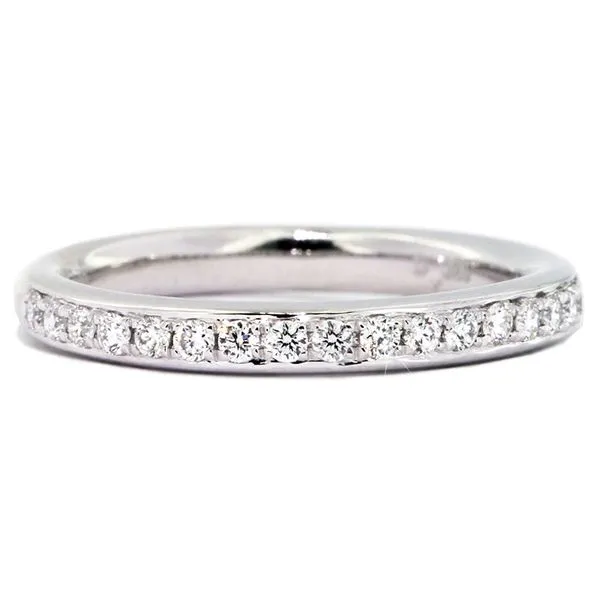
The word pavé is pronounced [pa-vay], which is derived from the French word "pave". Small diamonds are set together and held by small points that look like pearls. These tips are made of ground metal, but they are not very visible. It looks like a pebble-paved road. This type of inlay is popular with older couples.
Advantages: The dense arrangement of the setting brings together the light of the small diamonds, making the jewelry sparkle and add extra brilliance to the diamond, making it more glamorous and creating a visual effect of "diamonds without gold", meaning that only the sparkle of the diamond is visible, not the metal.
Disadvantages: If the entire ring is pavé set, it is difficult to change the size of the ring. We highly recommend that when customizing your ring, you make sure to determine the size of the ring so that you will not have any problems after the ring is completed.
9. Cluster Setting: Vibrant and Vivacious
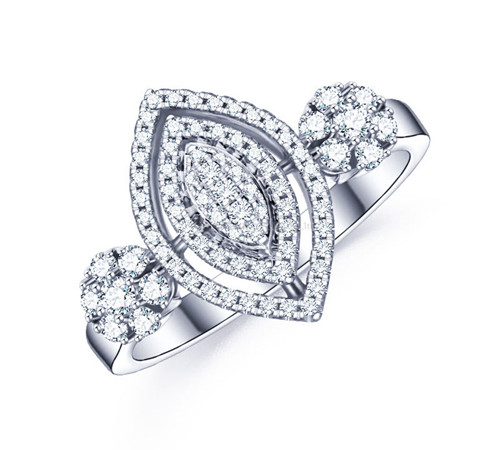
The cluster setting showcases a group of smaller diamonds arranged closely together to create the illusion of a larger, more substantial diamond. This setting offers a vibrant and vivacious look, with the diamonds arranged in various shapes and patterns. The cluster setting exudes charm and captivates with its dazzling display of brilliance.
Advantages:
Enhanced brilliance: The cluster arrangement of multiple gemstones in a ring creates a dazzling display of brilliance and sparkle. The combined effect of multiple stones amplifies the overall shine and luster of the ring.
Cost-effective: Cluster Setting Rings can be a more affordable option compared to a single large stone ring. By using smaller gemstones, the cost of the ring can be significantly reduced while still achieving a stunning visual impact.
Versatility: Cluster Setting Rings offer a wide range of design possibilities. The arrangement of stones can be customized in various shapes and patterns, allowing for unique and creative designs to suit different preferences and styles.
Durability: The close proximity of the gemstones in a cluster setting provides additional support and protection to each stone. This design feature makes the ring more resistant to damage or loss of individual stones, making it a durable choice for everyday wear.
Disadvantages:
Difficulty in resizing: Cluster Setting Rings can be challenging to resize due to the intricate arrangement of multiple stones. Resizing may require significant adjustments to maintain the overall design and stability of the ring.
Cleaning and maintenance: The clustered setting can make cleaning and maintenance of the ring more intricate. The small spaces between the stones can trap dirt and debris, requiring extra care and attention during cleaning to ensure the stones remain radiant.
Prone to snagging: The clustered design of the ring can sometimes have protruding edges or surfaces that may catch on clothing or other objects. This can increase the risk of snagging and potential damage to the ring or surrounding materials.
Individual stone visibility: While the cluster setting enhances overall brilliance, the visibility of individual stones may be reduced due to their close proximity. If showcasing the individual stones is a priority, a solitaire or other setting style might be more suitable.
10*Milgrain setting
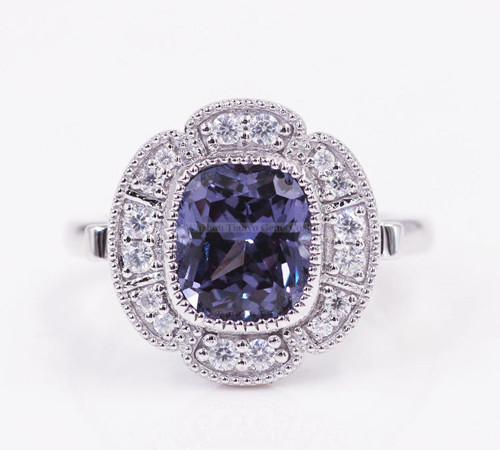
Milgrain setting is a jewelry design technique that involves adding a delicate beaded texture along the edges of a piece, typically around gemstones or along the band. Here are some advantages and disadvantages of Milgrain setting:
Advantages:
Vintage appeal: Milgrain setting is often associated with vintage or antique-inspired jewelry. It adds a touch of old-world charm and elegance to a piece, giving it a timeless and romantic feel.
Enhanced detailing: The fine beaded texture created by milgrain setting adds intricate detailing to a piece of jewelry. It can accentuate the beauty of the gemstones or highlight the craftsmanship of the design, making it visually appealing and distinctive.
Conceals imperfections: Milgrain setting can help conceal minor imperfections or irregularities along the edges of gemstones or the band. The beaded texture draws the eye away from any flaws, providing a seamless and polished look to the piece.
Versatility: Milgrain setting can be applied to various jewelry styles and designs, including engagement rings, wedding bands, earrings, and bracelets. It complements different gemstones, metals, and design elements, allowing for a wide range of creative possibilities.
Disadvantages:
Fragility: The delicate nature of the milgrain beading makes it more susceptible to wear and damage compared to smooth settings. The small beads can potentially loosen or chip over time, requiring regular maintenance and care.
Limited resizing options: Milgrain setting can complicate the process of resizing a piece of jewelry. The addition of the beaded texture may require more extensive modifications to maintain the design and integrity of the setting, making resizing more challenging.
Cleaning difficulty: The small crevices between the beaded texture can trap dirt, oils, and debris, making cleaning more challenging. Extra care is needed to ensure the milgrain detailing remains clean and free from buildup.
Personal preference: The beaded texture of milgrain setting may not appeal to everyone's aesthetic taste. Some individuals prefer a sleek and minimalist look, which may not align with the ornate and textured appearance of milgrain setting.
There is no good or bad diamond setting, there are pros and cons to each, and it is important to consider the person who will be wearing the ring and what their heart desires.
Whether they want a piece of jewelry with a high level of security or one that will bring out the fire of the diamond, you can think about their daily life and what kind of activities they attend regularly. You can also think about what they like based on what you know about them. You can even have a ring with multiple settings that blend perfectly, so you can be creative and create your most unique piece of jewelry!
Copyright ©2025 Wuzhou Tianyu Gems Co., Ltd - All Rights Reserved.